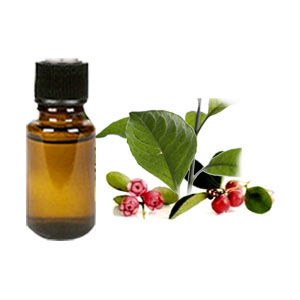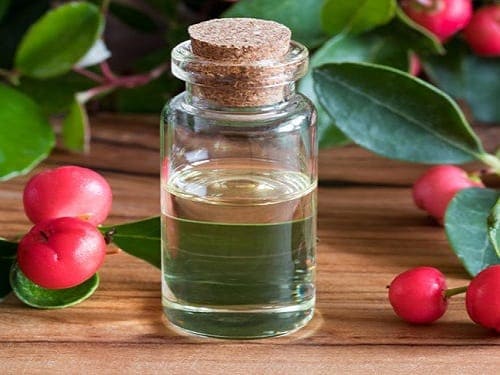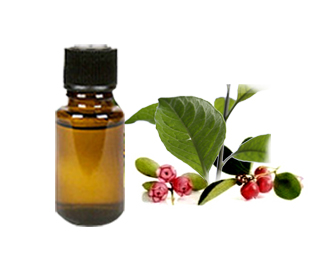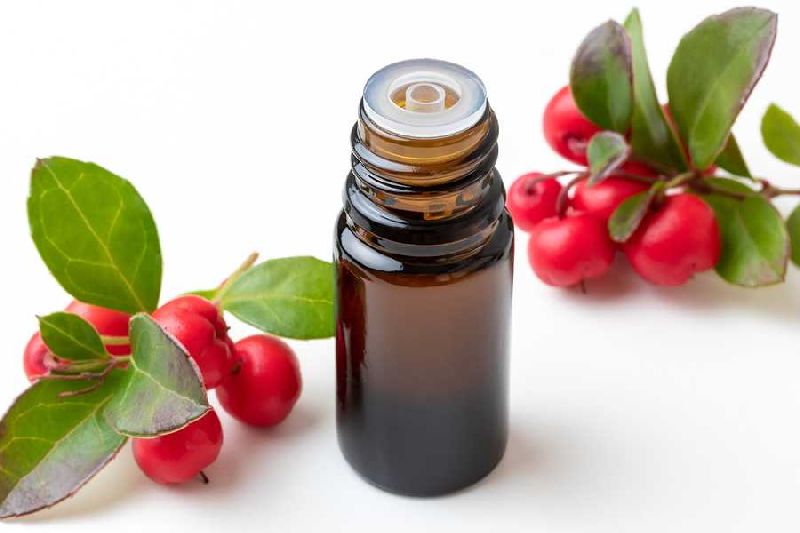Company Information
Ask for more detail from the seller
Contact SupplierRelieves Muscles, Flu and Poor Digestion
Wintergreen oil is a beneficial essential oil that’s extracted from the leaves of the Gaultheria procumbens evergreen plant. Once steeped in in warm water, beneficial enzymes within wintergreen leaves called methyl salicylates are released, which are then concentrated into an easy-to-use extract formula using steam distillation. Wintergreen leaves themselves are actually odorless and tasteless, but after a compound called gaultherin present in the leaves is enzymatically hydrolyzed to methyl salicylate, the signature “minty” aroma develops. Because wintergreen oil naturally has a sweet and fresh scent and smell, very similar to that of peppermint oil, it has a wide variety of uses in foods, teas, aromatherapy, household and beauty products.
Also sometimes called eastern teaberry, checkerberry or gaultheria oil, wintergreen has been used for centuries by tribes native to North America to help cure fatigue, lung, sinus and respiratory illnesses. Wintergreen oil is naturally an antioxidant, energizing and immune-enhancing since it lowers inflammation and reduces pain.
Wintergreen Oil Benefits
Research shows that wintergreen oil has the ability to act like a natural analgesic (pain reducer), antiarthritic, antiseptic and astringent. Wintergreen oil primarily contains the active ingredient methyl salicylate, which makes up about 85 percent to 99 percent of wintergreen essential oil. It’s one of the best sources of this inflammation-fighting compound in the world and believed to be one of only several plants that naturally supply enough to form an extract. Birch essential oil also contains methyl salicylate and therefore has similar tension-reducing benefits and uses.
Wintergreen is absorbed into skin quickly and acts like a natural numbing agent, similar to cortisone. It also promotes blood circulation and cools irritation, which is comforting to swollen skin. Additionally, wintergreen also contains antioxidants and beneficial ingredients, including guaiadienes, a-pinene, myrcene, delta 3-carene, limonene and delta-cadinene.
Wintergreen essential oil benefits include :
Wintergreen oil has been used as an active ingredient in many topical pain relievers for decades to help ease muscle joint and bone pain. Today, it’s commonly used for reducing other painful conditions, too; for example, wintergreen is used as a natural headache remedy, for chronic nerve pain, PMS symptoms and arthritis. This is because wintergreen naturally contains active constituents that work similarly to aspirin. The leaves are also beneficial for preventing and treating digestion problems, including stomachaches, cramps, gas and bloating. And because wintergreen oil can help fight inflammation, it’s effective for helping treat a wide variety of illnesses — everything from respiratory issues like asthma, colds and flu, kidney problems, and even heart disease.
12 Wintergreen Oil Benefits and Uses
1. Muscle Pain Relief
Ever try a pain-relieving muscle rub that smelled like menthol or mint? Chances are the product included peppermint or wintergreen oils because both are considered “counterirritants.” Wintergreen oil works to reduce swelling and irritation that occurs around painful muscle, tissue and joints. Several drops massaged into the skin is great for relieving achy joints from arthritis or rheumatism. It’s also helpful for treating sore muscles and chronic neck pain, as well as relieving lower back pain.
2. Cold and Flu Treatment
Wintergreen leaves contain an aspirin-like chemical that can help reduce pain, congestion, swelling and fever associated with common illnesses. To open your nasal passages and breathe more deeply, combine wintergreen and coconut oil together, and than rub them into your chest and upper back just like a store-bought vapor rub. Other beneficial oils to include in this blend in order to treat or prevent the common cold or flu are eucalyptus, peppermint and bergamot oils.
3. Antibacterial and Antiviral
Since it helps combat bacterial growth, viruses and fungi, use wintergreen around your home or on your body to remove dangerous contaminants. You can run some through your dishwasher or laundry machine to kill odor-causing bacteria and molds that can linger, or scrub some into your showers and toilet bowls.
4. Digestive Relief
Wintergreen oil can be used in small doses to increase stomach acid and juices that help improve digestion. It’s considered a natural mild diuretic and increases urine production, which can help cleanse the digestive tract and reduce bloating. It also has anti-nausea benefits and soothing effects on the gastric lining and colon because of its ability to reduce muscle spasms, making it a natural remedy for nausea. You can rub a homemade wintergreen oil mixture over your abdomen, stomach and lower back to improve blood flow and prevent cramping or pain.
5. Skin and Hair Treatment
As a natural astringent and antiseptic, when applied directly to the skin with a carrier oil, wintergreen is able to fight inflammation from blemishes and skin disorders. It’s also helpful for clearing up acne since it can be used to kill germs on the skin. You can add one to two drops to your normal face wash or mix it with coconut or jojoba oil to nourish itchy, red, swollen skin. In the shower, use wintergreen oil on your scalp or hair to remove bacteria, greasiness and dandruff while adding a fresh scent — similar to the benefits of coconut oil for hair.
6. Energizer and Fatigue Fighter
Records show that Native Americans used wintergreen leaves to increase stamina, alertness and endurance during exercise since it can help extend respiratory capacity and treat pain, mucus buildup or inflammation. Try inhaling wintergreen and peppermint oil before workouts to increase concentration and wakefulness. You can also dab some along with a carrier oil on your neck, chest and wrists to fight symptoms of sleepiness or to help overcome chronic fatigue syndrome. And for recovery following a workout, diffusing wintergreen oil with a diffuser or vaporizer can help open up nasal and respiratory passages; improve blood flow; or relive pain associated with muscular, joint or skeletal strains.
7. Soothing Bath Soak
To unwind and relieve muscle tension, applying pure wintergreen oil mixed along with lavender oil to either a warm bath or ice bath serves as a great muscle relaxer.
8. Air Freshener
Since it works as a natural home deodorizer that can help mask foul smells, use wintergreen oil around your home to sensitize the air and surfaces of your bathroom and kitchen. Combine several drops with water in a spray bottle and apply to hard surfaces, appliances, garbage cans and even your toilet bowls. You can also diffuse wintergreen oil using a diffuser to fill bathrooms with a fresh, minty scent or add several drops to some homemade laundry soap for its deodorizing effects.
9. Hunger and Cravings Reducer
The taste and smell of mint can help reduce cravings and signify satiety, which is why many people find it comforting to chew minty gum after a meal or between meals. If you feel the afternoon munchies coming on or the tendency to overeat, try sniffing wintergreen oil or gargling it in your mouth. You can try applying a couple drops on your temples, chest or clothes, too.
10. Homemade Toothpaste
With its ability to kill odor-causing bacteria and mouth irritants, wintergreen oil is a great addition to homemade (or store-bought) toothpastes.
11. Homemade Mouthwash
Wintergreen not only helps naturally freshen your breath, it can also protect gums and teeth from infection and pain. Add one to two drops to water and gargle in your mouth for 30–60 seconds before rinsing.
12. Natural Flavor Enhancer
In commercial food and beverage manufacturing, wintergreen is used as a natural flavoring agent in certain minty-tasting foods, candies and teas. One way to use some at home is to simply add one to two drops to your favorite green smoothie recipes to cut the taste of bitter greens. You can also make homemade mint tea by adding one to two drops to warm water, which improves digestion and helps relieve bloating after a big meal.
Wintergreen Oil Research and Studies
The Gaultheria procumbens wintergreen plant is a member of the Ericaceae plant family. Native to North America, especially cooler parts of the Northeast United States and Canada, wintergreen trees that produce bright red berries can be found growing freely throughout forests. As a primary source of methyl salicylate, a lipophilic liquid that is commonly used as a natural analgesic, counterirritant and rubifacient ingredient in commercially marketed over-the-counter dermatological products, wintergreen has the most researched benefits in regard to pain management and numbing skin and sore muscles.
The effectiveness of the topically applied product depends on the release of the drug and the dosage form. Research done by the College of Pharmacy and Health Sciences at Long Island University found that that methyl salicylate from typical ointment bases and several commercial products worked differently on pain, with more concentrated forms (such as pure wintergreen oil) producing the most effects.
Aside from fighting pain, other evidence shows that wintergreen is a powerful fighter of free radical damage and oxidative damage. Research done by the Department of Pharmacology at Medical University of Lodz in Poland tested dry leaf extracts of eastern wintergreen leaves to evaluate their effectiveness as a source of bioactive antioxidant phytocompounds. Through systematic activity testing and phytochemical profiling, researchers found high levels of inflammation-fighting antioxidants, including phenolics, procyanidins and phenolic acids. Moderate levels of flavonoid antioxidants were also found.
Comprehensive studies led to the identification of 35 different polyphenols with procyanidin A-type trimer, quercetin 3-O-glucuronide, isomers of caffeoylquinic acids and epicatechin being the dominant components.
Other studies also support the benefits of wintergreen in reducing inflammatory responses and reliving infection, swelling and pain. A 2014 report published by researchers from the University of Toulouse in France found that Gaultheria procumbent extract’s main ingredient methylsalicylate (MeSA) can be metabolized in plant tissues to form salicylic acid, a phytohormone that helps induce plant immunity against microbial pathogens.
The use of wintergreen essential oil as a biocontrol agent against inflammatory responses within damaged and infected tissue was evaluated. Results showed strong induction of defense markers after the treatment with wintergreen oil and reduction in inflammation and infection. Fluorescence measurement of infected tissues revealed that treatments led to a strong reduction (60 percent) of pathogen development and that the efficacy of the G. procumbens essential oil was even similar to the commercially sold product.
DIY Wintergreen Essential Oil Recipes
You’ll always get the most benefits from essential oils when they’re 100 percent pure, organic and therapeutic-grade. Pure wintergreen oil should have a pale yellow or pinkish yellow color, so steer clear of artificially dyed green or blue oils. Look for wintergreen oil that smells strong and pungent, but not unpleasant or sour.
Aromatically: In your home, use a diffuser or vaporizer to distribute the clean smell and antiseptic properties of wintergreen throughout the air. You can always inhale wintergreen directly from the bottle.
Internally: Although leaves from wintergreen plants are edible, it’s NOT recommended to use concentrated wintergreen oil internally since this can potentially be toxic. Due to high levels of very powerful methyl salicylate, some authorities worry about possible interactions of consuming wintergreen, especially in pregnant women or anyone with heart or digestive issues.
Some health care practitioners do use wintergreen as an internal supplement, but it’s best to do so carefully under supervision to avoid using too much or an impure product. Many people have reported no unwanted side effects when consuming it, but each person is different. When working with a professional, you might be directed to take therapeutic-grade wintergreen oil as a dietary supplement by adding 1–2 drops to warm water, a smoothie or green juice.
Topically: It’s not recommended to use pure concentrated wintergreen essential oil directly on your skin without first diluting it with a safe carrier oil. Use a small amount to start, just 1–2 drops, and mix it into coconut, olive, almond or jojoba oil before rubbing into skin and massaging into muscles. Keep in mind that a very little bit of wintergreen and peppermint oils goes a long way, so using more will not result in better results in this case and can actually cause irritation.
Try using wintergreen essential oil in these simple and effective homemade recipes :
Homemade Muscle Rub Recipe
This homemade muscle rub really works to penetrate deep into the muscles, bringing a soothing and relaxing sensation. This is one of my favorite things to use after I’ve completed a workout.
Total Time : 20–30 minutes
Serves : 30
Ingredients :
Directions :
Homemade Mouthwash Recipe
Homemade Remineralizing Toothpaste Recipe
Potential Wintergreen Oil Side Effects and Interactions
High doses can be toxic and even painful, so avoid overconsuming wintergreen oil or applying it directly to skin. Use very small quantities of wintergreen oil, especially if you are new to trying it. Also be careful to keep it away from your eyes, the mucus membranes inside of your nose, pets and babies. Because methyl salicylate can be harmful when used on open wounds, internally, on babies or children, and on anyone with allergies, use caution and start slowly.
If you have sensitive skin, there’s a chance you can react badly to mint oils and might experience redness, burning and swelling, so do a small patch test first to make sure you don’t experience any side effects. Try testing one to two drops on an area of your skin that isn’t sensitive, such as your feet or calves. Make sure you can tolerate wintergreen oil well before using it internally or on larger parts of your body. Avoid using wintergreen oil internally unless you’re working with a professional. Ingesting it can possibly cause side effects for some that include heartburn, flushing, mouth sores, headaches, rashes and acid reflux. Some prescription medications and over-the-counter medications can also adversely interact with wintergreen when it’s consumed, so speak with your doctor if you take any digestive or asthma medications, blood thinners, pain medication, or anti-coagulants.






